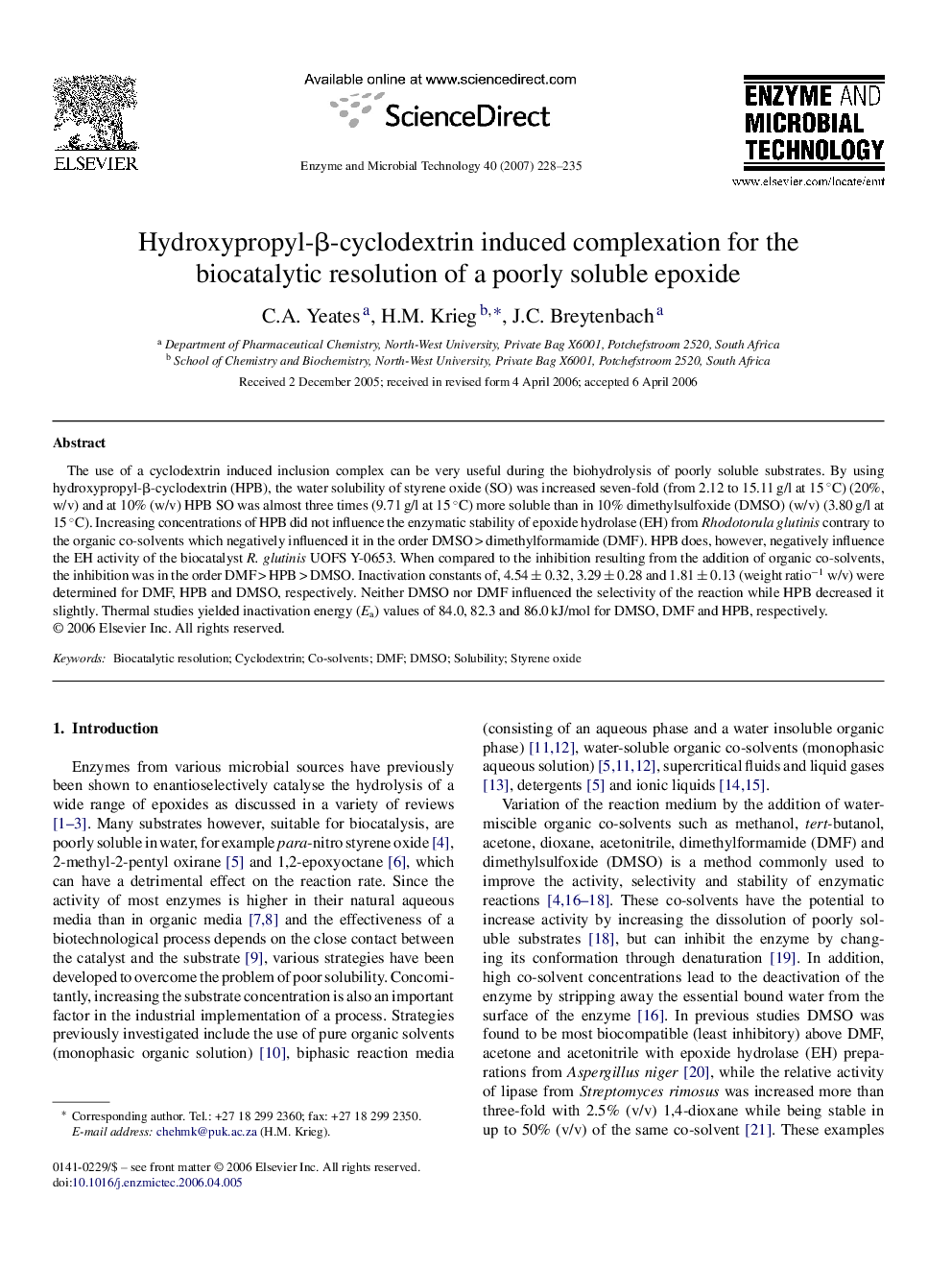| کد مقاله | کد نشریه | سال انتشار | مقاله انگلیسی | نسخه تمام متن |
|---|---|---|---|---|
| 18282 | 42717 | 2007 | 8 صفحه PDF | دانلود رایگان |

The use of a cyclodextrin induced inclusion complex can be very useful during the biohydrolysis of poorly soluble substrates. By using hydroxypropyl-β-cyclodextrin (HPB), the water solubility of styrene oxide (SO) was increased seven-fold (from 2.12 to 15.11 g/l at 15 °C) (20%, w/v) and at 10% (w/v) HPB SO was almost three times (9.71 g/l at 15 °C) more soluble than in 10% dimethylsulfoxide (DMSO) (w/v) (3.80 g/l at 15 °C). Increasing concentrations of HPB did not influence the enzymatic stability of epoxide hydrolase (EH) from Rhodotorula glutinis contrary to the organic co-solvents which negatively influenced it in the order DMSO > dimethylformamide (DMF). HPB does, however, negatively influence the EH activity of the biocatalyst R. glutinis UOFS Y-0653. When compared to the inhibition resulting from the addition of organic co-solvents, the inhibition was in the order DMF > HPB > DMSO. Inactivation constants of, 4.54 ± 0.32, 3.29 ± 0.28 and 1.81 ± 0.13 (weight ratio−1 w/v) were determined for DMF, HPB and DMSO, respectively. Neither DMSO nor DMF influenced the selectivity of the reaction while HPB decreased it slightly. Thermal studies yielded inactivation energy (Ea) values of 84.0, 82.3 and 86.0 kJ/mol for DMSO, DMF and HPB, respectively.
Journal: Enzyme and Microbial Technology - Volume 40, Issue 2, 4 January 2007, Pages 228–235